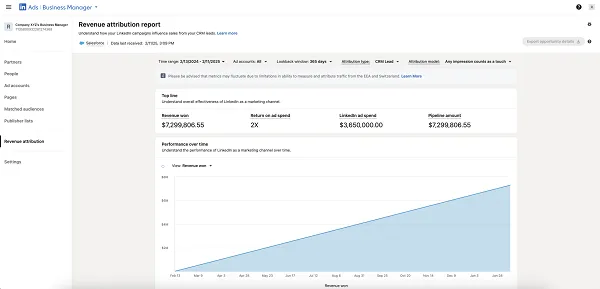While overall voluntary turnover in the U.S. has declined in recent years—from 24.7% in 2022 to 13.5% in 2024—the business landscape is experiencing a steady rise in C-suite turnover, with a 5.4% rate for heads of organizations and executive roles in August 2024. This increase in leadership turnover is driven by factors such as post-pandemic economic stability and heightened performance expectations.
Amidst the complex challenges of digital transformation, stakeholder engagement, and ethical scrutiny, company executives also face immense pressure to engage in strategic leadership succession planning. Ensuring smooth leadership transitions is crucial, yet many organizations often underestimate the financial intricacies involved in the executive search process.
Budgeting for Executive Searches: A Comprehensive Breakdown
Understanding the primary components of the budget for an executive search is crucial for companies aiming to secure top-tier leadership while managing costs effectively. Leading search firms operate on a retainer basis, like other professional services firms, requiring an initial deposit followed by payments based on an established timeline or milestones. The total fee is projected and can be budgeted for, but decision makers should be vigilant for hidden fees such as administrative charges or travel expenses.
In addition to search fees, costs for candidate psychometric testing can accumulate. These assessments are crucial for evaluating the suitability of candidates for high-level positions. Some firms may charge per candidate tested, so it’s important to review the fine print to understand any additional fees that may apply.
By comprehensively understanding and effectively allocating funds for each component of the executive search process, organizations can better navigate the complexities of leadership transitions and secure the talent needed to propel their business forward.
4 Tips to Successfully Budget for Executive Searches
Effective budgeting for an executive search involves not only the obvious direct expenses, but also the often-overlooked indirect costs. The following four tips can help business leaders recognize and plan for these hidden expenses and ultimately enjoy a successful strategic succession planning process:
1. Recognize the value of internal resources. Companies should accurately assess and allocate the time internal teams will spend on the executive search process. This includes the time spent by HR professionals, senior management, and board members when interviewing and evaluating candidates. This time is valuable and often underappreciated in the HR budgeting process.
Start by estimating the total hours internal teams will dedicate to the search. Include initial meetings to define the role, coordination with the search firm, and time spent interviewing and evaluating candidates. Use the average hourly rate of these employees to calculate the cost. For instance, if senior managers earning $200 per hour spend 50 hours on the search, this amounts to $10,000 in indirect costs. Document these hours meticulously and review them against the project timeline to ensure a comprehensive budget. Regularly update this estimate as the search progresses to capture any additional time investments.
2. Plan for transition period costs. It’s crucial to plan for the costs associated with the transition period, including vacancy costs, ramp-up times, and potential operational disruptions. These hidden expenses can cost millions and significantly impact the overall budget if not accounted for.
For example, the absence of a CFO might delay critical financial reporting, leading to financial risks. Ask the search firm if they can assist with interim leadership solutions to mitigate these costs. Additionally, factor in the onboarding and ramp-up time for the new executive. Allocate budget for any necessary training and integration activities to ensure the new hire can quickly become effective in their role.
3. Manage start date and relocation delays. Address potential delays related to the new executive’s start date and relocation, as these can significantly extend the time to fill the position and increase hidden costs. Set realistic timelines for each stage of the search process, including interview scheduling and decision-making. Consider that an employed executive may need to give 30 days or more notice before starting a new role.
Additionally, plan for any relocation time and check if the relocation policy includes potential expenses such as realtor and closing fees, as not all companies cover these costs. Take time to regularly communicate with the candidate to manage expectations and minimize delays. Incorporate buffer periods in the project timeline to account for any unforeseen delays, ensuring that the budget reflects these potential costs.
4. Optimize the efficiency of the engagement. Employ strategies to maximize the efficiency of the funds spent on executive searches by setting clear goals, maintaining open communication, and ensuring timely execution of each step in the process.
Begin by clearly defining the role and candidate profile from the outset, involving all key stakeholders to prevent misalignment later in the process. Maintain open and honest communication with the executive search firm, providing them with all necessary information and responding to their inquiries promptly. Schedule interviews consecutively to keep the process moving and reduce downtime. Remember that the process is competitive for top candidates, and if you lose a candidate mid-process, you might have to start over. Consider performance-based agreements with the search firm to ensure accountability and alignment with your hiring goals.
Implementing these strategies ensures smoother transitions and maximizes the return on investment in executive talent acquisition. Leaders should proactively engage in detailed budgeting, maintain open communication with their search firms, and regularly review and adjust their strategies to mitigate hidden costs and secure the right leadership for future success. This proactive approach will help ensure that your organization is prepared for any future leadership transitions.




































































